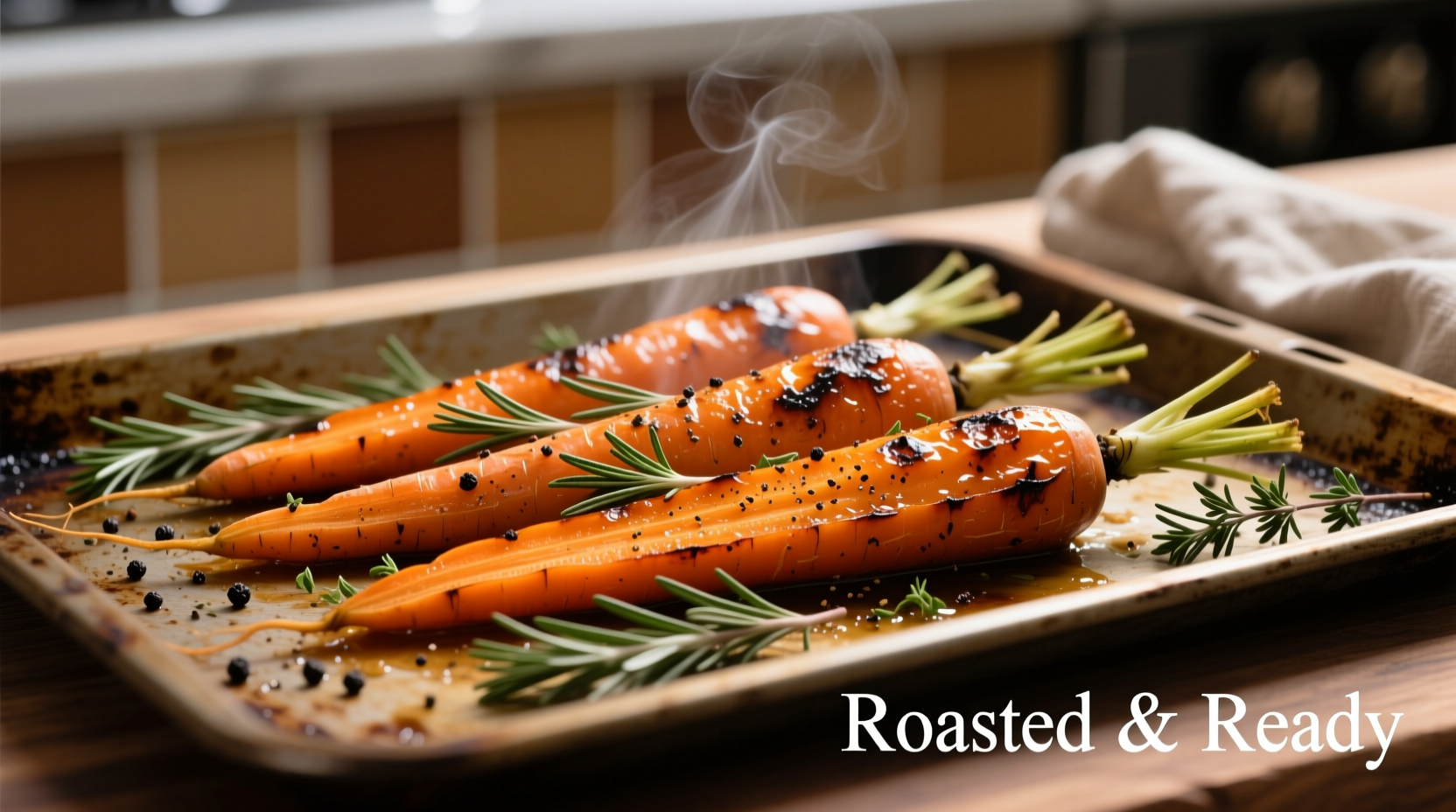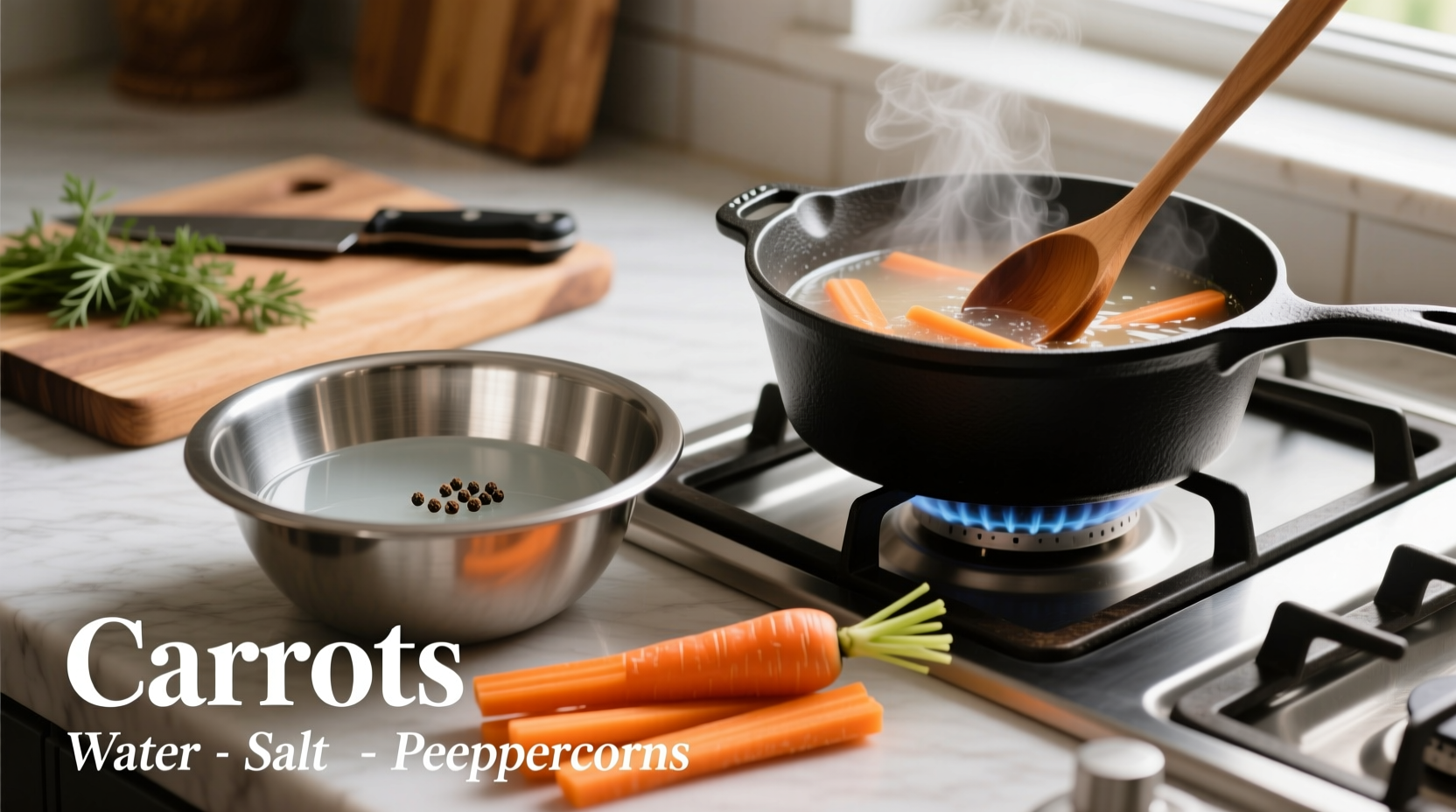Discover exactly how to cook carrots to perfection with professional techniques that preserve nutrients while maximizing flavor. Whether you're a beginner or experienced cook, these scientifically-backed methods will transform your carrot dishes from bland to extraordinary.
Why Cooking Method Matters for Carrots
Carrots contain heat-sensitive nutrients like vitamin C but also benefit from cooking to increase bioavailability of beta-carotene. According to USDA FoodData Central research, different cooking techniques affect nutrient retention differently. The key is understanding which method serves your specific culinary goals.
| Cooking Method | Beta-Carotene Retention | Vitamin C Retention | Best For |
|---|---|---|---|
| Steaming | 95% | 85% | Nutrient-focused dishes |
| Roasting | 100% | 60% | Flavor development |
| Boiling | 80% | 50% | Quick preparation |
Preparing Carrots Properly Before Cooking
Proper preparation significantly impacts your final dish. Contrary to popular belief, peeling isn't always necessary—thorough scrubbing preserves valuable nutrients concentrated near the skin. When cutting carrots:
- Cut uniformly for even cooking (1/4-inch slices for steaming, 1/2-inch chunks for roasting)
- Leave skins on for maximum nutrient retention
- Soak in cold water for 10 minutes if using older carrots to restore crispness

Mastering the Four Essential Carrot Cooking Methods
Boiling Carrots: The Beginner's Approach
Boiling remains the most accessible method for home cooks. Fill a pot with enough water to cover carrots by 1 inch, add 1 teaspoon salt, and bring to a gentle boil. Add carrots and cook for 10-15 minutes until fork-tender but still slightly firm. Drain immediately and toss with butter or olive oil.
Pro tip: Save the cooking water for soups or sauces—it contains valuable nutrients that leached from the carrots.
Roasting Carrots: Flavor Maximization Technique
Roasting transforms carrots through caramelization. Preheat oven to 400°F. Toss carrot pieces with 1 tablespoon olive oil, 1/2 teaspoon salt, and desired seasonings. Spread in single layer on baking sheet. Roast 20-25 minutes, flipping halfway, until deeply caramelized and tender.
For restaurant-quality results, add 1 tablespoon honey or maple syrup during the last 10 minutes of cooking. The natural sugars in carrots pair perfectly with warm spices like cumin or coriander.
Steaming Carrots: Nutrient Preservation Method
Steaming preserves more nutrients than boiling. Place 1 inch of water in pot with steamer basket. Bring to simmer, add carrots, cover, and cook 8-12 minutes until tender-crisp. The exact time depends on carrot thickness—thinner slices need less time.
According to FDA food safety guidelines, steaming vegetables properly requires maintaining consistent heat without boiling dry, which ensures even cooking while preserving texture.
Sauteing Carrots: Quick Stovetop Technique
For weeknight meals, sautéing delivers fast results. Heat 1 tablespoon oil in skillet over medium heat. Add carrots and 2 tablespoons water. Cover and cook 5 minutes, then uncover and continue cooking 5-7 minutes until tender and slightly browned.
Contextual Cooking: When to Use Each Method
Understanding the appropriate cooking method for your situation elevates your results:
- Meal prep: Roasting works best for batch cooking—carrots maintain texture when reheated
- Side dishes: Steaming preserves bright color for presentation-focused meals
- Soups and stews: Boiling integrates flavors directly into the liquid base
- Special occasions: Roasting with fresh herbs creates restaurant-quality presentation
Avoid steaming when making purees—the extra moisture dilutes flavor. Skip boiling for salads where firm texture matters. Each method has specific limitations that affect final dish quality.
Flavor Enhancement Secrets from Professional Kitchens
Professional chefs use these techniques to elevate simple carrot dishes:
- Add acid (lemon juice or vinegar) after cooking to brighten flavors
- Finish with fresh herbs just before serving for maximum aroma impact
- Combine carrots with complementary flavors: orange zest, thyme, or toasted cumin
- For sweeter carrots, add a pinch of salt during cooking to enhance natural sugars
Troubleshooting Common Carrot Cooking Problems
Fix these frequent issues with professional solutions:
- Mushy carrots: Overcooking is the culprit—reduce time by 3-5 minutes next time
- Uneven cooking: Cut pieces to uniform size before cooking
- Bland flavor: Boost with aromatic vegetables like onions or garlic during cooking
- Dry roasted carrots: Toss with 1 tablespoon broth or water halfway through roasting
Nutrition Optimization: Cooking for Maximum Health Benefits
Research from the Journal of Agricultural and Food Chemistry shows that cooking carrots increases beta-carotene availability by breaking down cell walls. However, excessive cooking destroys heat-sensitive vitamin C. The solution? Steam carrots for 8 minutes—this balances optimal nutrient retention with improved digestibility.
Pair cooked carrots with healthy fats like olive oil to increase absorption of fat-soluble vitamins. This simple addition boosts nutrient utilization by up to 30% according to clinical nutrition studies.











 浙公网安备
33010002000092号
浙公网安备
33010002000092号 浙B2-20120091-4
浙B2-20120091-4